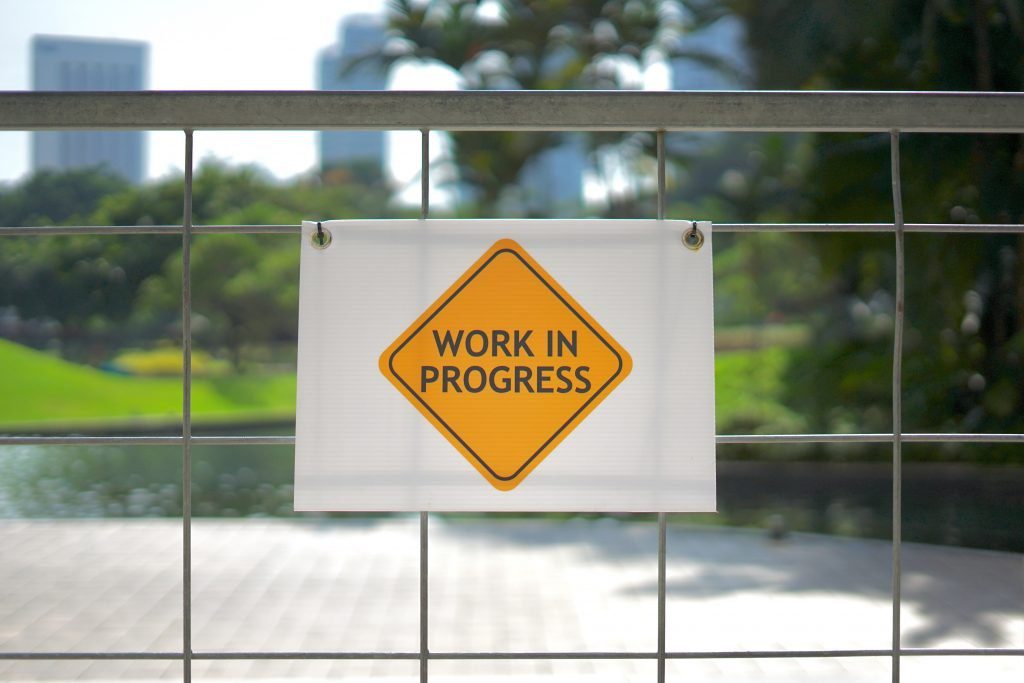This post may contain affiliate links, which means I’ll receive a commission if you purchase through my links, at no extra cost to you. Please read my full disclosure for more information.

I have always loved the feeling of accomplishing my personal goals even more so than any external goals that are bestowed to me. It is not only rewarding to reach a certain finish line but it is also a great confidence boost.
Achieving your goals can be life changing. The most amazing thing is that sometimes you even attain important insight about yourself. You start to recognize your work patterns, the way you organize your time, the specific steps that motivate you to continue, etc. Those are only some of the many benefits of achieving your goals.
So then, how do you do it? What are some of the steps you take to get there and to stay inspired? How do you prevent yourself from losing steam while you are working on your goals and not seeing results?
These are the 7 simple steps that I follow consistently in order to achieve my goals.
1. Determine Your Goals
First thing to do is to ask yourself the following questions:
Is this goal really your goal? Is it really important to YOU and to your life? To your wellbeing? To your confidence? To your self-development? To your lifestyle?
Ask yourself these questions until you are sure the goal you are setting is actually important to you and to your life. The goal has to be important, whether it be career, work, education, or health related. It could even be a creative based goal. Ultimately a goal is still about you. Remind yourself that you are the one putting in the work, time, and effort. Sometimes even money if you’re spending it on courses and/or on tools and materials.
In this matter, is this goal self-imposed or given to you? Have you made premeditated peace to put in the time, the effort, the work, and your daily input and dedication?
Make sure that this goal is an important goal of yours. Write down all of your life engagements and make a priority list. Where does this specific goal fall under? Is it at the top of your list or at the bottom? Where does your goal fall under? Be completely honest with yourself.
Once you are honest with yourself; you are ready for the second step.
2. Be Realistic not Pessimistic
The second step is to be realistic, not pessimistic.
Seems obvious… right?
Wrong.
Please hear me out here.
We often think we are being optimistic when we are being pessimistic. We fear that we won’t achieve our goals so we don’t bother trying. I know, because I am guilty of this pattern of thinking too.
It is worth noting that as human beings we always assume that the tasks at hand are either much harder or much easier than we believe them to be.
I personally always believe that I’ll be able to read X amount of pages or write X amount of words in a single day. These goals are not always achievable because life, and specifically time, do not work that way.
Some days, I achieve and surpass my goals. On other days, I don’t even get the opportunity to simply attempt that goal. The most important thing is to not let yourself be discouraged and demotivated, to remain optimistic but still be realistic. You need to try to remain motivated and consistent with you goals even when reality knocks you down. Or else, you will quit.
For example: I know that I can write a full-length novel because I have done it three times already in the past.
However, I also know that I can not write a novel in a month when I am writing essays for graduate school while working a part-time job. It does not make any sense. I would have to cut time on sleeping in order to write because I have more urgent priorities such as school and work.
In that sense, I am being realistic and weighing my options. If I know ahead of time that life will become challenging I will set the bar lower for myself.
But, I will still push myself to achieve those small goals such as writing 2000 words a week for the 8 months that I am in Graduate school. In the long run, those small writing sessions will add up to around 64 000 words and almost a full length novel (depending on the genre of the book).
Therefore, it is all about being optimistic but equally about being realistic. For this reason, it is recommended to have a time frame attached to your goal.
SEE ALSO: How to Create a Vision Board
3. Time Frame
It is really important to acknowledge and establish a reasonable time frame for your goals.
Some goals take years but need daily work such as, habit building, learning a new language (or even becoming fluent in this new language), saving money for a big life event such as a house, marriage or moving abroad. The list goes on.
The way I would establish this time frame is by finding frames of reference. Although every single individual is different, there are some helpful guidelines that exist for any goal you want to achieve.
For example: If you want to get an undergraduate degree; you can look at how other students accomplished their degree and you need to look at the program requirements to figure out how many years you should attend. I reside in Canada and it is typically known that students attain their undergraduate degree at around the fourth year of study.

However, if you do some research and look at your options. Some people take longer to achieve this goal. They go to school part-time. Some take summer semesters to lessen the load throughout the year in order to work full-time during the fall and winter semesters.
In this way, knowing the time frame can also help you decide if you want to commit to your goal since many bigger or life changing goals can go on for a couple of months to years in the long run while some goals can be for a lifetime like a dietary change, such as going vegan.
4. Write it Down
Write down your goals and write down all the little steps (little goals) you need to take to get there. To some goal setters this step seems obvious but to others it might seem quite useless or even tedious and time consuming.
The way I see it however is that by writing down your goals and visually seeing it outside of your head; the act of writing the steps down has the potential of holding you accountable and making your goals seem more manageable as well as conceivable.
Your goals become less abstract and much more tangible.
Sometimes, when thoughts and ideas remain too long in your head; they tend to be overshadowed, put off or even worse; they eventually become forgotten. Having your goal visibly written down makes it seem more like fact than fiction or wishful thinking.
Furthermore, if you feel comfortable to do so, I would even display that goal on a cork board, on your desk, on your bedside table, somewhere on your screensaver or any personal devices you use. On the other hand, simply keeping it written down in a Notes app or in your journal might be sufficient for you to be reminded of your goals.
Additionally, when you write it down you can further establish and determine a clearer time frame and approach to reaching your end goal. This leads to the next step: determining your tolerance.
5. Determine Your Tolerance
Inevitably you will be pushing yourself or else there would not be any progress in achieving your goal. As I mentioned, your goal can be anything from a small goal to a bigger larger goal that may take you years.
But what you need to understand is that sometimes you need to start small in order to achieve big.
Here’s another example: let’s take a fitness related goal this time.
If one of your goals consists of doing 500 pushups in one go but you’ve spent 20 years of your life never truly attempting pushups … let me just warn you that you will need an actionable and reasonable plan.
I used to never be able to do a pushup. Why? Because I never truly set it as a goal and it had for a long time simply been a wishful thinking goal instead. I would make excuses such as I just don’t have the right body type or strength. This was completely false. And I realized if I truly did not have upper body strength then I could surely work on it.
And I did.
I started small.
I did pushups with my knees touching the floor first and just using my hands and arms to push down in half-pushups. And then I increased the number of half-pushups.
In the first week, I aimed for 10 and the next week for 20 half-pushups. And suddenly I was surprised by week 3 I could already slowly start doing full body pushups although I could only do about 5 to 8 of them. It was the most I had ever done in twenty years. Why? Because I started small and remained consistent. I determined my tolerance.
This leads us to our next step: track your progress!
6. Track Your Progress
This comes back to writing it down. By writing your goals down, you can also track your progress and keep yourself further accountable. You can have weekly and monthly check ins and go back and see how far you’ve come.
Set up a bullet journal or a graph, anything from a simple to a complex way to goal tracking. Whatever suits you and most importantly, whatever method works for you.

I have a weekly grid in which I track my main goals that are work, writing, and workout related in which I add a check mark on the days of the week where I worked on these goals. Sometimes I’ll add a specific detail such as, 1000 words written or 30 min writing sprint, 300 calories burned on the treadmill or 30 min jogging, etc.
At the end of the week I can see how many times (or how much time) I worked on a specific goal.
In this matter, I can also evaluate if I am on track or not according to the initial time frame I set out. Most times I am content for being a step closer even if I only worked on a goal 3 out of the 7 days of the week. It amounts to 3 days I wouldn’t have had if I hadn’t written down my goals and tracked my progress.
7. Reassess
This leads to the final step: reassess.
Allow room for errors.
Allow room for growth.
Allow room to adjust and reevaluate.
The whole point of reassessing is to shed new light on your goals. It also sheds new light on your behavior and habits towards your goals.
If you are further or farther behind, you can always reassess. Look back at what you wrote down, look back at your time frame as well as your progress and then, readjust.
Sometimes, you surprise yourself because you truly did dedicate your time and effort to your goal and you are only noticing it during your reassessment. Your goal has become actionable, it has become doable.
Sometimes you might even decide that you want to prioritize another goal instead or that you are satisfied with how far you have come.
That concludes the 7 simple steps I use to achieve my goals. What are the steps that you take to accomplish your goals? What goal have you achieved in the past or what goals are you currently working on?
Like the post? Save Pin for later!










Leave a Reply